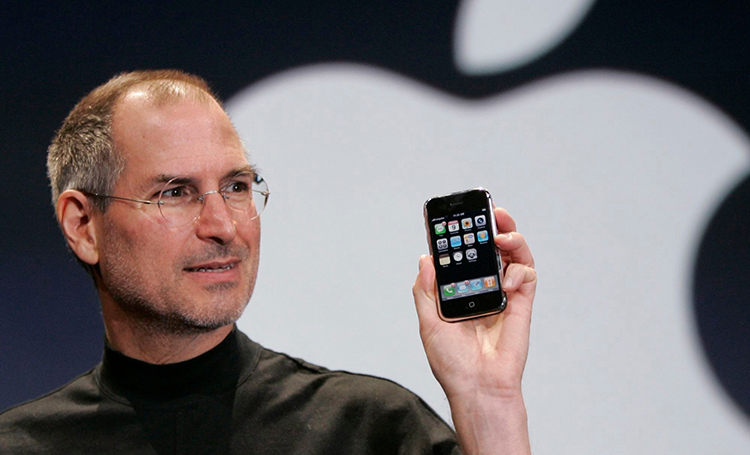
Video Creator’s Guide to YouTube’s Past, Present, and Future
The world’s most popular video hosting site began as an online dating service, but it’s become so much more since then. This is the history of YouTube.
Undoubtedly, the internet would be a very different place without YouTube. If you want to laugh, learn a new skill, or keep up with a community, YouTube is one of the best places to do that.
It has made superstars out of people who share their expertise or open up about their experiences. YouTube has also given a home to many niche communities, giving a voice to creators who would otherwise be harder to find on other platforms. It has also given a home to filmmakers, giving them an alternative path to breaking into the industry that doesn’t revolve around film school or paying your dues in Hollywood.
The platform has evolved, growing into a larger entity each year, and by updating itself and taking the best parts from other platforms, YouTube has stayed on top. YouTube Live and Shorts are two newer additions, moving into territories dominated by other platforms like Twitch and TikTok.
However, leaning too heavily on features cribbed from others has put YouTube in the unenviable position of playing catch-up to newer competitors. Still, the company that put online videos on the map and created an entire generation of “content creators” is more popular than ever.
YouTube as This Century’s Phenomenon
The proliferation of digital technologies such as the digital camera (and, later, smartphones), faster internet connections, and video editing software would grease the wheels for a generation of content creators.
But without a place to upload, share, view, and comment on video, content creation as we know it now was likely destined to a fate similar to that of home video VHS tapes. It’s hard to imagine that, seeing as the last two decades have exploded with social media platforms all exploring new and exciting ways to share videos.
Still, it wasn’t until YouTube came along that people suddenly realized video was a medium that could be accessible from a creator’s standpoint.
Opening the Doors to Video Content
By making the platform free, from hosting to viewing, video as a tool was open to the public. Anyone could create a YouTube account and start uploading videos. Here’s what you need to know about making a YouTube account as a creator.) By the decade’s end, terms like YouTuber and content creator were bandied about freely. And while YouTube’s openness made it possible for anyone to become a video creator, filmmakers benefitted the most.
Since then, YouTube has been a hub for filmmakers who want to share their projects. YouTube has been for filmmakers what Soundcloud has been for musicians: a place to showcase your projects and let people know you have the talent.
While few have transitioned into Hollywood, YouTube has nonetheless provided an opportunity that wasn’t available before. And the platform has also shown before that it cares about filmmakers by tapping in popular creators to direct for the platform.
In addition to sharing their work, filmmakers have also taken to YouTube to share their knowledge, passing down film school wisdom to anyone wanting to learn more about filmmaking. Whether you want to learn more about what the buttons on your camera do, how to light a scene, or how to replicate specific shots, you’ll likely find a creator on YouTube with a professional background to show you.
Further, filmmaking YouTube is a place to watch scene breakdowns, behind-the-scenes footage, and interviews, which offer a granular look into the industry and everything else about filmmaking you won’t learn in school. If you want to know how the sausage is made, start with YouTube—FYI, the PremiumBeat channel is a top destination for filmmaking tutorials.
History of YouTube
YouTube, as you know it today, is part of Google. You need a Google account to log in, which allows you to upload videos, create playlists, comment, like, subscribe, and everything else. But it wasn’t always a Google company.
While YouTube wasn’t independent for long, the startup received considerable funding and was on an upward trajectory before Google began sniffing around. The purchase made the founders incredibly rich, but before YouTube was YouTube, it was just an idea shared between three friends. Like basically every other startup, the story begins in someone’s garage in the land of innovation: Silicon Valley.
Hot or Not 2.0
The three founders, Jawed Karim, Steve Chen, and Chad Hurley, who met while working at PayPal, developed the idea together. The “official” origin story credits the idea to Chen and Hurley, who apparently came up with the idea when they couldn’t upload footage of a dinner party they attended.
Karim has contested that account, and is on record saying that the dinner party never happened. Chen backed this up, saying back in 2006 the creators invented the dinner party idea to make the story “very digestible.” The reason the story was sanitized is that the founders tell two different stories, neither of which holds up that well today.
According to Karim, the idea for YouTube came to him when he couldn’t easily find footage of two particular events in early 2004: the infamous Janet Jackson Super Bowl fiasco and the Indian Ocean tsunami that tragically impacted countries in South and Southeast Asia. On the other hand, according to Chen and Hurley, they were inspired by the same site that inspired Facebook’s Mark Zuckerberg: Hot or Not. The idea was to create an online video platform for dating, where users would upload videos of themselves.
Whether either of these accounts is the truth will likely remain a mystery, but the different origin stories share one important fact. They all conclude in creating an online video platform.
Building Blocks of a Juggernaut
In the “official” telling, Chen and Hurley can’t upload a video to the internet. In Karim’s version, he can’t find a particular video of an event. And in Chen and Hurley’s “real” telling, they wanted to create a site for people to upload and share dating profiles in the form of video.
Although each story’s idea that led to the solution is different, the end result produced a video platform that would take care of uploading, finding, and viewing videos. Because in order to find and watch videos online, it would have to be easy to upload them. So, regardless of whose idea it was or how it came to be, the three founders got to work.
By the spring of 2005, YouTube, which was still in a closed beta—i.e., closed off to the public—had its first video. The now-famous “Me at the Zoo” video was uploaded by Karim. At only 18 seconds and not very exciting, the video proved the platform worked. While the idea for a video-centric dating platform didn’t pan out, the bones were there, so the team pivoted.
A month later, YouTube went into a public beta that opened the gates for just about anyone with an internet connection to access the site.
Later that year, the platform had its first viral hit. The Nike ad starring football (soccer) star Ronaldinho was the first video to hit 1 million views on YouTube, kicking off the start of the viral video era that would spread beyond the platform into emerging social media sites.
The Beginnings of Viral Video
While not every video was an instant hit, viral videos accounted for a vast majority of the site’s views; in 2011 The Telegraph reported that 30% of videos on YouTube were responsible for 99% of the views on the platform. YouTube was so popular that it used as much bandwidth in 2007 as the entire internet in 2000. And, its popularity continues. In 2019, YouTube was responsible for 37% of the world’s mobile internet traffic.
By the end of 2005, YouTube had left the beta stage and became open to the public. The simplicity of viewing and sharing videos took off. With the platform still new, it was a bit like the wild west—YouTube was figuring it out as it grew. Things like copyright were not a priority, which is astounding when you consider how stringent YouTube is these days with copyrighted material.
But, growing pains like this are a part of any startup. Fumbling the ball is sometimes the only way for a company to learn from its mistakes and grow.
For example, when users uploaded popular SNL clips, specifically Andy Samberg’s and Chris Parnell’s “Lazy Sunday,” NBC was justifiably enraged. But that moment would lead to YouTube’s content verification program down the road. The move to appease networks and copyright holders would continue after YouTube changed hands from the founders to a pair of Stanford grads.
Google Enters the Scene
Sergey Brin and Larry Page made it out of the dot-com bubble better than they entered it. Though they were ready to sell Google for just $1 million in 1999, the rejection proved to be lucrative for Google. The company went public in 2004. Just six years later, in 2005, Google was worth $52 billion; in 2020, they reached a valuation of $1 trillion—yes, that’s with a “t.”
That same year, Google sold a decent chunk of stock to raise cash for acquisitions, filling their coffers with enough money to purchase a new company focused on online video. In October 2006, not even a year since the public launch of YouTube, Google bought the online video platform for $1.65 billion in Google stock, making the founders instant millionaires.
The purchase effectively ended Google Video, becoming part of Google’s growing list of failed ventures, but YouTube would become one of Google’s best decisions.
YouTube’s Evolution
YouTube’s humble beginnings as a failed video dating site didn’t put it in the ground because the founders knew where to pivot. Instead of limiting the site to dating profile videos, YouTube became the go-to place for sharing and watching videos. If you could capture the footage and transfer it to your computer, anything from vacation footage to commercials to tutorials would be fair game.
Alternatively, if you weren’t much for uploading, you could catch clips of your favorite shows, music videos, and other content that was on TV. Of course, those uploads weren’t legal, forcing YouTube to remove copyright-infringing videos at the request of the copyright holders.
In 2006, just before Google purchased it, Youtube implemented the content verification program. This gave copyright holders the power to flag content violating copyright, which YouTube would then remove. That in turn led to a partnership between YouTube and NBC that would promote the network’s upcoming fall TV schedule. NBC would be far from the only network to do something like this in the following years, opening the door for networks attempting to reach an increasingly-online audience.
So, Why Ads?
The genius of YouTube wasn’t that you could upload videos or watch them; the genius was that you could do it all for free. You didn’t have to pay out of your own pocket for hosting, and you didn’t have to pay to watch, either.
At a time when streaming platforms were still years down the road, YouTube was one of the few ways you could enjoy video entertainment when you wanted. The business decision set the standard for other platforms going forward. But, the business had to make money somehow. While ads had been a part of the internet since its inception in some way or another, Google took that further, allowing businesses to buy placement in search results.
The mid-2000s was a big moment for online ads, seeing the rise of increasingly targeted ads. These monetized users’ online presence by presenting them with ads based on their search history and other factors. With expertise in crafting out-of-the-box ideas for ad placement, Google decided to place ads in videos. Pre-roll video advertising came a year later.
These pop-ads would appear in the lower part of the video, which allowed users to continue watching the video without interruption. The fact that users could remove the ad by clicking the tiny “x” made these ads tolerable, at least.
It would be the first of many iterations regarding advertisements on YouTube, but ads wouldn’t just benefit the platform. Some of that ad money would end up in creators’ pockets, kicking off the era of the content creator.
Growing With Creators
Not long after the pop-up ads, YouTube created the partner program. The new program would reward the biggest creators with monetary compensation. How much each creator earned was up to how much ad revenue they brought in, which was, in turn, a direct result of the amount of views on each video. More views meant more people were experiencing and clicking on ads.
It turned out to be a lucrative venture not only for YouTube, which was raking in the ad dollars, but also for creators. It wasn’t long before content creators were making enough to support themselves.

The term “YouTuber” suddenly joined the English lexicon. Early reports from those days mention YouTubers were making “thousands of dollars.” One early YouTuber made as much as $100,000 the year after the partner program launched.
Though that’s a hefty sum for talking into a camera, $100,000 would pale compared to what the most popular YouTubers make today—ad revenue is one of many revenue streams for YouTubers. The ever-popular MrBeast, for example, reportedly brought in $54 million in 2021. But creators couldn’t hope to make that much money if watching YouTube wasn’t as easy as it is.
YouTube is so ubiquitous that you can watch it on your phone, tablet, TV, or video game console—basically, anything with a screen and an internet connection will run YouTube.
But that wasn’t always so. YouTube’s jump from desktop to mobile would set a precedent for watching online video from any device, anywhere in the world.
YouTube’s Ground-Breaking Partnerships

Apple
Around the same time YouTube was ramping up its monetization efforts, another California-based company with a long history of innovation was working on a piece of hardware that would change the world.
In January 2007, Steve Jobs announced the iPhone to the world. The debut of the iPhone would mark the beginning of the smartphone era.
Compared to other offerings, the original iPhone’s large touchscreen made it the perfect device for watching videos. YouTube saw the opportunity and launched a mobile version of its site with 1,000 videos. The mobile site wasn’t the whole YouTube experience, but it allowed users to now watch videos from their phones, a novelty that would never fade.
Later, YouTube would update the site to be more in line with the desktop version, as well as launch an app. YouTube’s ability to pivot to the changing winds would be its biggest asset, and it was only beginning.
Vevo
Again embroiled in the midst of a copyright debacle, YouTube partnered with Vivendi to start Vevo. You may take the Vevo branding on YouTube music videos for granted, but it was a big deal back then.
The generation that grew up on music video countdown shows, such as TRL and BET, could now watch their favorite music videos in the order they wanted. The videos were high-resolution and legitimate. If you didn’t have the song on your MP3 player, finding the video on Vevo was the best way to listen.
The convenience of your favorite song only a click away was an excellent development for listeners, but it also allowed the music industry to profit from it.
Rentals
In 2010, YouTube wanted to deliver more than user-generated content and licensed music videos. Sensing the shift to digital media and streaming, YouTube sought to get in the game by offering movie rentals.
Though far from Netflix’s vast offerings, YouTube launched its rental service with only five films that were to premiere at the Sundance Film Festival. In fact, the debut of YouTube rentals happened on the same day as the start of the festival.
A spokesperson for YouTube commented at the time that the platform had strong ties with the indie film scene and that they wanted a way for indie filmmakers to reach YouTube’s audience. The reliance on indie filmmakers and non-traditional video were to be a combination that would help shape a future YouTube project.
Live
Livestreaming is such a part of the online fabric that it feels like it’s always been there, but YouTube only implemented livestreaming in 2011. YouTube Live—not to be confused with the award ceremony of the same name—was limited to significant events at first.
Sporting events, such as the 2012 Olympics, were the primary benefactors of YouTube Live. Only select partners could use the service, but that changed when YouTube opened it up to creators a few years later.
Starting in 2013, users with at least 1,000 subscribers could livestream. The subscriber threshold was lowered to 100 a few months later. When livestreaming arrived on the mobile app in 2017, users needed a subscriber base of 10,000, a hard get for most people, though it was later lowered to 1,000.
Kids app
By the mid-2010s, YouTube was as much a platform for children as it was for everyone else. YouTube was free, convenient, and entertaining, a combination that encouraged parents to hand off a device to children to keep them busy on YouTube.
A 2020 poll asking parents if their children watched YouTube found 80% of parents answering in the affirmative. The problem with children on the platform was that YouTube was wide open, which could lead to content unsuitable for younger children. Sure, there was content made specifically for children, such as cartoons and other G-rated fares, but not a lot was done to protect children from watching the wrong content.
To combat this issue, YouTube sought to create a version of YouTube specifically for children. YouTube Kids launched in February 2015, offering curated content and advanced parental controls.
Gaming
Seeing that content about video games for gamers was on an upward trend, YouTube launched YouTube Gaming in August of 2015, grouping all video game-related content in a dedicated hub.
It was a smart move, considering views of Minecraft content began to rise exponentially around this time, with some tallies putting the number of Minecraft video views in 2015 in the billions. But it wasn’t just Minecraft or any one game that made this happen.
Creators branched out to produce content around video games, such as reviews, guides, walkthroughs, in-depth video essays, and let’s plays. It was also at this time that streaming was becoming more popular thanks to Twitch, which gave creators a platform to play video games and talk directly to their followers.
YouTube’s newfound focus on gaming set the company up to attract some of the biggest streamers in the industry. Tired of Twitch’s draconian policies and stingy ad revenue splits, streamers such as Ninja, CouRage JD, Valkyrae, TimTheTatMan, Dr. Disrespect, DrLupo, and Myth, would later leave for YouTube’s greener (read: $$$) pastures, earning multi-million dollar signing bonuses in the process.
The year 2015 was a big one for YouTube, as it also saw the launch of YouTube Red. This was the evolution of YouTube Music Key.
The new subscription service was made for YouTube power users who spent a lot of time on the platform. At $9.99, YouTube Red would remove ads from videos and allow users to listen to YouTube in the background—this was a nice bonus for people who wanted to keep listening to a video while typing a text or looking something up. YouTube Red subscribers could also download videos for offline viewing.
The service extended to all corners of the platform, even the Gaming and YouTube Music apps. YouTube Music would eventually replace Google Play music and become one of the fastest-growing music streaming services, but it was initially very different. Regardless, YouTube Red subscribers were promised original content made by YouTube; it delivered.
YouTube’s Original Creations
In early 2016, YouTube released four original projects: A Trip to Unicorn Island, Lazer Team, Scare PewDiePie, and Dance Camp. All four projects would feature YouTubers, a trend that would continue with future projects.
Scare PewDiePie would later get canceled after the star of the show was himself canceled, but YouTube’s lineup of original content showed no signs of stopping. YouTube produced full-length feature films, series, documentaries, animated shows, reality shows, docu-series, and more. The projects were mainly in English, but YouTube made several Spanish, Korean, and French projects.
If YouTube Red sounds strange, that’s because the service was renamed YouTube Premium in 2018. The rebrand also saw the platform launch a revamped YouTube Music more akin to Spotify.
YouTube Premium didn’t change much, apart from the name, and users still received access to the music service and original content. But, the latter slowed down to a trickle.
The End of an Influencer Era
The same year of the YouTube Premium rebrand, it announced it was pulling back from original scripted content. A year later, in 2019, it was reported YouTube was canceling many of its original shows, which YouTube denied. But by 2022, YouTube threw in the towel, pulling back entirely from original content except for a select few verticals.
While YouTube’s plan for original content didn’t pan out, the television streaming platform, YouTube TV, worked out just fine. In 2017, YouTube began offering YouTube TV, competing with Sling TV, PlayStation Vue, and Hulu with live TV for a share of the cord-cutting market.
With YouTube TV, viewers could stream and record TV channels via the cloud. Plus, YouTube TV stood apart from the competition by offering unlimited cloud DVR storage.
YouTube Shorts
YouTube popularized content creation, but newer social media platforms took it further. The popularity of Vine, Snapchat, and now TikTok showed an online video landscape trending toward shorter videos. YouTube, not a company to let a chance slip by, debuted YouTube shorts. Attempting to poach TikTok’s base, the YouTube shorts format was similar to TikTok’s: videos with a 60-second limit shot in portrait orientation.
For YouTube creators with an established following, YouTube Shorts was another medium for content creation, albeit one that required less production. It allowed creators to branch out, whether into short comedy skits, behind-the-scenes footage, or quick vlogs. The low barrier to entry also made YouTube Shorts an excellent entry point for amateur creators. Thanks to YouTube Shorts, many new faces found a following and were elevated to partnered creators.
As of the fall of 2021, YouTube Shorts received over 15 billion views. And to compensate creators on this new corner of the platform, YouTube created a $100 million fund to pay creators.
According to some reports, the highest-earning YouTube Shorts creators could earn as much as $10,000 a month. The fund is just temporary while YouTube figures out monetization for Shorts, which has already begun.
While the viability of the platform is still up in the air and TikTok continues to dominate, YouTube did just very recently announce plans to improve Shorts, such as allowing creators to cut 60-second clips from existing videos to turn into shorts via the YouTube app.
YouTube’s Roadmap
YouTube kicked off 2022 with an ambitious roadmap, detailing updates coming to the platform and its many services in the months to come. The roadmap promised future monetization opportunities for emerging verticals such as Shorts and Live.
Shorts Updates
Building on the $100 million fund for Shorts creators, YouTube is implementing other ways to monetize the brief videos.
ouTube is adding access to BrandConnect, a YouTube service that connects creators with brands. Shorts creators can monetize their videos by creating branded content with a direct line to relevant brands. Along those lines, viewers will soon be able to shop directly from a Short, giving creators more opportunities to supplement their revenue.
A feature from Live, Super Chat, will also be tested for Shorts. Super Chat allows viewers to pay for messages that stand out, which is more likely to get them noticed by the creator. Besides monetization, Shorts is receiving new video effects and editing tools.
Live Updates
YouTube Live, Twitch’s largest competitor, is getting new features, too.
Collaborative streaming is a stand-out feature, updating the streaming formula by having two creators go live on the same stream. For streamers unsure about hosting a solo stream, collaborative streaming takes some of the pressure off.
But in regards to monetization, Live is receiving additional features. After years of not offering it, YouTube Live is finally offering gifted memberships, taking a page from Twitch. Gifted memberships are a way for hardcore fans to support their favorite creator by buying additional memberships for those that don’t have one.
For YouTube as a whole, the platform is revamping the comment section, supporting creators with a new tool that lets them set channel guidelines. The guidelines will help creators establish boundaries, which will hopefully weed out the bad apples, or at least make commenters think twice about posting unhelpful, negative comments.
On the viewer side, YouTube is also be updating the UI, promising to streamline the interface for easier organization and access to videos. YouTube is also updating comments for viewers by syncing comments to specific timecodes, giving comments better context.
Where YouTube is Going
If there is one thing you can count on YouTube to do, it’s being able to adapt. YouTube is ever-changing, whether it’s “borrowing” features from other platforms, finding new ways to monetize, or making the platform more accessible to creators and viewers.
If YouTube continues on the current path, the future will include more streaming, more eCommerce initiatives, and more immersive experiences.
What does that mean, exactly?
Changing With the Times
It’s not news that YouTube has been pushing hard into the streaming market, poaching the best Twitch streamers with huge bonuses and promises of a more open platform.
But it’s not just money drawing in streamers from other platforms. YouTube’s structure allows creators to engage viewers in multiple ways apart from streaming.
It’s easy for streamers to save streams as YouTube videos that can be watched whenever. Streamers can make other content on the platform, such as shorts and traditional videos. Streamers don’t have to worry about fragmenting their audience across multiple platforms by doing it all on one platform. And, YouTube’s livestreaming service is constantly improving for both streamers and viewers.
That’s not likely to change, as YouTube is doubling down by adding new features to the livestreaming service, such as making it possible for two streamers to go live together. A unique feature called “live redirect” makes it easier for creators to increase retention by directing viewers to another premiere or livestream happening on the same channel. Creators with no community guidelines strikes can also direct viewers to another channel.
New Monetization Options
Another thing to watch out for in YouTube’s feature is eCommerce.
For a long time now, streamers have included affiliate links to eCommerce sites to supplement their income. The streamer gets a cut when viewers click on an affiliate link and purchase something. It’s easy money.
Using custom discount codes or selling branded merch are other ways streamers make money.
Video live shopping is the future of shopping, and YouTube wants a piece of the action. YouTube is building eCommerce features directly into the app, such as being able to tag products featured in the video that links to a shopping site (such as in the video above).
YouTube is also trying out live shopping videos—a modern take on QVC—where viewers can chat with presenters, see product unveilings, and receive special deals. They are also updating how eCommerce appears throughout the site, showing users curated product carousels as they scroll the feed. It’s an entirely new avenue for Youtube and one that’s lucrative for creators.
360 Video
Updating existing verticals and adding new ways to monetize will keep YouTube afloat, but that alone won’t keep it relevant. That’s why YouTube is exploring other types of media.
One that’s been available since 2016 (but not available to all) is 360 video. With 360 videos, viewers can experience the entire environment and feel immersed like never before.
While it’s best to experience the feature in a dedicated VR headset, there are headset mounts for phones that can replicate the experience at a fraction of the cost. With the world stuck at home for the past few years, the chance to visit new places and see all around you is a welcome change from the same four walls.
Podcasting
To a lesser extent, YouTube is branching out into the podcast world, having just recently created a podcast hub on the platform.
With many podcasts uploaded to YouTube, investing in the popular medium makes perfect sense, especially since every other podcast platform doesn’t support video podcasts. To mark the occasion, YouTube partnered with NPR, putting many of NPR’s best podcasts in front of YouTube viewers.
Though podcasts themselves aren’t new, YouTube is embracing the format like the behemoth it is.
Where YouTube May Go Wrong
For as much as YouTube has done right, the ride to the top hasn’t been without error. The past decade witnessed what can happen when an algorithm created to increase engagement radicalizes viewers by recommending increasingly political extremist videos. But that’s really a symptom of YouTube’s problem with moderation or lack thereof.
To be fair, recent changes have made it better for creators and viewers. Removing the dislike count was a huge deal that took away the power of trolls looking to mass downvote videos.
This year, YouTube began testing a new feature to cut down on excessive spam in the comments section, a feature that many popular YouTubers had been asking for. The platform has also been better about cracking down on problematic creators. Still, with more viewers and creators looking to stand out, YouTube needs to stay on top of moderation.
Weaponized DMCA Strikes
Another significant issue is YouTube’s strict copyright rules. It seems that just about anything can result in a copyright strike or a Content ID claim. While these copyright guidelines are meant to protect copyright holders, YouTube can sometimes go too far.
Anybody can claim a copyright violation, and though it will eventually be thrown when the claim is unfounded, it still hurts YouTube creators’ bottom line.
Recently, a pair of scammers earned $23 million in music royalties by falsely claiming copyright ownership of popular music. Because the Digital Millennium Copyright Act states that platforms can’t get sued as long as claimed copyrighted material is removed, YouTube has to listen to copyright holders. But the crackdown is an overcorrection that hurts the creators keeping the platform alive.
The Struggle to Innovate
Keeping the platform alive and relevant are two different things, however.
YouTube has proven it can stay in the spotlight this many years after its inception, but it’s done that by implementing ideas already proven on other platforms. In other words, YouTube is following the Facebook formula; when it sees some new medium or format is popular, it takes it.
Livestreaming, as it is now, was taken from Twitch. Shorts were taken from TikTok. The podcast hub was taken from established platforms like Apple and Spotify.
Sure, when YouTube launched, it was a breath of fresh air, but it’s since grown stale. YouTube has become a company that no longer innovates. It could be left behind if YouTube doesn’t start producing new ideas.
That’s a phrase that has likely been uttered a billion times; it will likely be uttered a billion times more. Probably until the end of time, people will ask viewers to subscribe or like, and kick off videos with a catchy intro. Whether YouTube shuts down tomorrow or 20 years from now, its impact will be felt for a long time after.
Though YouTube’s origins are murky and a bit strange, it launched at precisely the right time. The need to entertain and be entertained created an entirely new profession, making celebrities and millionaires make videos from their bedrooms. The platform is now a home to niche communities, obscure hobbies, and more Minecraft and Roblox videos than one could ever hope to keep track of. And it’s constantly changing.
There’s YouTube Music, YouTube TV, YouTube Premium, YouTube Shorts, YouTube Live, and just plain old YouTube. Before the decade is over, there will probably be a few more additions to that list. It’s crazy to think it started as a dating service, but that just proves how efficiently YouTube can pivot.
It’s not the plucky upstart of the mid-aughts, and it no longer innovates like it used to, but YouTube has nonetheless shown in recent years that it can still change. Whether that’s cracking down on bad apples, taking the best parts of other platforms, or giving creators more options to earn, YouTube is not afraid to adapt. It’s okay with being a work in progress.
Cover image via Aratehortua.
For more on YouTube, check out these articles:




